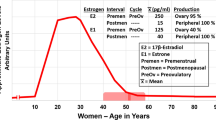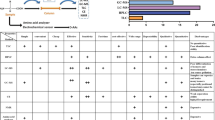Abstract
The presence of 5α,6α-epoxy-cholestan-3β-ol, an oxidation product of cholesterol, has been demonstrated in a variety of animal tissues. No definitive biologic role for this sterol has been forthcoming, although the physiologic implications of its occurrence are many. The presence of the epoxide in ultraviolet (UV)-irradiated skin was detected by a combination of thin layer chromatography (TLC) and gas liquid radiochromatographic (radio-GLC) techniques in 1971 and led to the suggestion that it might be responsible for the carcinogenic properties of UV. Subsequently, in vivo levels of this sterol in the skin of UV-irradiated animals were quantitated by radio-GLC after TLC separation and preparation of the radiolabeled acetate ester. Presence of the compound in mouse liver was detected by GLC of the trimethylsilyl (TMS) ether and confirmed by mass spectrometry (MS). In all cases, however, in vivo quantitations were complicated by substrate induction of sterol epoxide hydrase, an enzyme that hydrates the epoxide to form cholestan-3β,5α,6β-triol (triol). Consequently, the relationship of the sterol epoxide to UV-carcinogenesis is as yet unclear and recent studies suggest that if this sterol is involved, then further metabolism of the compound must be required. A practical means of examining the metabolites of the epoxide was developed, employing radio-TLC scanning. Using this procedure, the relationships of substrate concentration, time of reaction and pH optimum to reaction rate were determined. Although in short term in vitro incubations of liver homogenates the bulk of epoxide is hydrated to triol, several other metabolites are detectable by TLC autoradiography. Even though the case for direct involvement of cholesterol epoxide in the etiology of carcinogenesis or other diseases is equivocal, the epoxide or its metabolites may yet prove valuable as a diagnostic aid in revealing abnormal function associated with certain diseases.
Similar content being viewed by others
References
Cross, A.D., Q. Rev. 14:317 (1960).
Gray, M.F., T.D.V. Lawrie and C.J.W. Brooks, Lipids 11:836 (1971).
Black, H.S. and W.B. Lo, Nature 234:306 (1971).
Kadis, B., J. Steroid Biochem. 9:75 (1978).
Fioriti, J.A., and R.J. Sims, J. Am. Oil. Chem. Soc. 44:221 (1967).
Lo, W.B. and H.S. Black, J. Invest. Dermatol. 58:278 (1972).
Black, H.S., and D.R. Douglas, Cancer Res. 32:2630 (1972).
Douglas, D.R., and H.S. Black, Chromatographia 6:229 (1973).
Black, H.S., and D.R. Douglas, Cancer Res. 33:2094 (1973).
Black, H.S. and J.L. Laseter, Comp. Biochem. Physiol. 53C:29 (1976).
Fioriti, J.A., N. Buide and R.J. Sims, Lipids 4:142 (1969).
Imai, Y., S. Kikuchi, T. Matsuo, Z. Suzuoki and K. Nishikawa, J. Atheroscler. Res. 7:671 (1967).
Aramaki, Y., T. Kobayashi, Y. Imai, S. Kikuchi, T. Matsukawa and K. Kanazawa, J. Atheroscler. Res. 7:653 (1967).
Scallen, T.J., A.K. Dhar and E.D. Loughran, J. Biol. Chem. 246:3168 (1971).
Martin, C.M., and H.J. Nicholas, J. Lipid Res. 14:618 (1973).
Mitton, J.R., N.A. Scholan and G.S. Boyd, Eur. J. Biochem. 20:569 (1971).
Aringer, L., and P. Eneroth, J. Lipid Res. 15:389 (1974).
Smith, L.L. and M.J. Kulig, Cancer Biochem. Biophys. 1:79 (1975).
Sevanian, A., J.F. Mead and R.A. Stein, Lipids 14:634 (1979).
Tsai, L.S., K. Ijichi, C.A. Hudson and J.J. Meehan, Lipids 15:124 (1980).
Chan, J.T., and H.S. Black, J. Invest. Dermatol. 66:112 (1976).
Bowden, J.P., G.M. Muschik and J.C. Kawalek, Lipids 14:623 (1979).
Chan, J.T., and H.S. Black, Science 186:1216 (1974).
Black, H.S., and W.A. Lenger, Anal. Biochem. 97:383 (1979).
Fioriti, J.A., M.J. Kanuk, M. George and R.J. Sims, Lipids 5:71 (1970).
Hwang, K., and M.I. Kelsey, Cancer Biochem. Biophys. 3:31 (1978).
Assman, G., D.S. Frederickson, H.R. Sloan, H.M. Fales and R.J. Highet, J. Lipid Res. 16:28 (1975).
Chen, H.W., A.A. Kandutsch and C. Waysmouth, Nature 251:419 (1974).
Chen, H.W., A.A. Kandutsch and H.J. Heiniger, Prog. Exp. Tumor Res. 22:275 (1978).
Peng, S.K., C.B. Taylor, P. Tham, N.T. Werthessen and B. Mikkelson, Arch. Path. Lab. Med. 102:57 (1978).
Chan, J.T., and J.C. Chan, Photobiochem. Photobiophys 1:113 (1980).
Lo, W.B., and H.S. Black, Experientia 27:1397 (1971).
Roffo, A.H., Am. J. Cancer 17:42 (1933).
Bergmann, W., H.E. Stavely, L.C. Strong and G.M. Smith, Am. J. Cancer 38:81 (1940).
Fieser, L.F., Science 119:710 (1954).
Bischoff, F., Adv. Lipid Res. 7:165 (1969).
Bischoff, F., and G. Bryson, Adv. Lipid Res. 15:61 (1977).
Seelkopf, C., and K. Salfelder, Z. Krebsforsch. 64:459 (1962).
Black, H.S., and J.T. Chan, Oncology 33:119 (1976).
Lo, W.B., and H.S. Black, Nature 246:489 (1973).
Black, H.S., Res. Commun. Chem. Path. Pharmacol. 7:783 (1974).
Black, H.S., and J.T. Chan, J. Invest. Dermatol. 65:412 (1975).
Reddy, B.S., C.W. Martin and E.L. Wynder, Cancer Res. 37:1697 (1977).
Reddy, B.S. and E.L. Wynder, Cancer 30:2533 (1977).
Reddy, B.S., and K. Watanabe, Cancer Res. 39:1521 (1979).
Smith, L.L., V.B. Smart and G.A.S. Ansari, Mutation Res. 68:23 (1979).
Parsons, P.G., and P. Goss, Aust. J. Exp. Biol. Med. Sci. 56:287 (1978).
Kelsey, M.I., and R.J. Pienta, Cancer Lett. 6:143 (1979).
Author information
Authors and Affiliations
About this article
Cite this article
Black, H.S. Analysis and physiologic significance of cholesterol epoxide in animal tissues. Lipids 15, 705–709 (1980). https://doi.org/10.1007/BF02534024
Received:
Issue Date:
DOI: https://doi.org/10.1007/BF02534024




